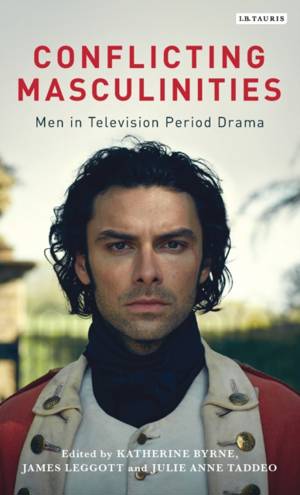
Door een staking bij bpost kan je online bestelling op dit moment iets langer onderweg zijn dan voorzien. Dringend iets nodig? Onze winkels ontvangen jou met open armen!
- Afhalen na 1 uur in een winkel met voorraad
- Gratis thuislevering in België vanaf € 30
- Ruim aanbod met 7 miljoen producten
Door een staking bij bpost kan je online bestelling op dit moment iets langer onderweg zijn dan voorzien. Dringend iets nodig? Onze winkels ontvangen jou met open armen!
- Afhalen na 1 uur in een winkel met voorraad
- Gratis thuislevering in België vanaf € 30
- Ruim aanbod met 7 miljoen producten
Zoeken
Conflicting Masculinities
Men in Television Period Drama
€ 254,45
+ 508 punten
Omschrijving
Never before has period drama offered viewers such an assortment of complex male characters, from transported felons and syphilitic detectives to shell shocked soldiers and gangland criminals. Neo-Victorian Gothic fictions like Penny Dreadful represent masculinity at its darkest, Poldark and Outlander have refashioned the romantic hero and anti-heritage series like Peaky Blinders portray masculinity in crisis, at moments when the patriarchy was being bombarded by forces like World War I, the rise of first wave feminism and the breakdown of Empire. Scholars of film, media, literature and history explore the very different types of maleness offered by contemporary television and show how the intersection of class, race, history and masculinity in period dramas has come to hold such broad appeal to twenty-first-century audiences.
Specificaties
Betrokkenen
- Uitgeverij:
Inhoud
- Aantal bladzijden:
- 320
- Taal:
- Engels
- Reeks:
Eigenschappen
- Productcode (EAN):
- 9781788313353
- Verschijningsdatum:
- 30/07/2018
- Uitvoering:
- Hardcover
- Formaat:
- Genaaid
- Afmetingen:
- 145 mm x 218 mm
- Gewicht:
- 521 g

Alleen bij Standaard Boekhandel
+ 508 punten op je klantenkaart van Standaard Boekhandel
Beoordelingen
We publiceren alleen reviews die voldoen aan de voorwaarden voor reviews. Bekijk onze voorwaarden voor reviews.










